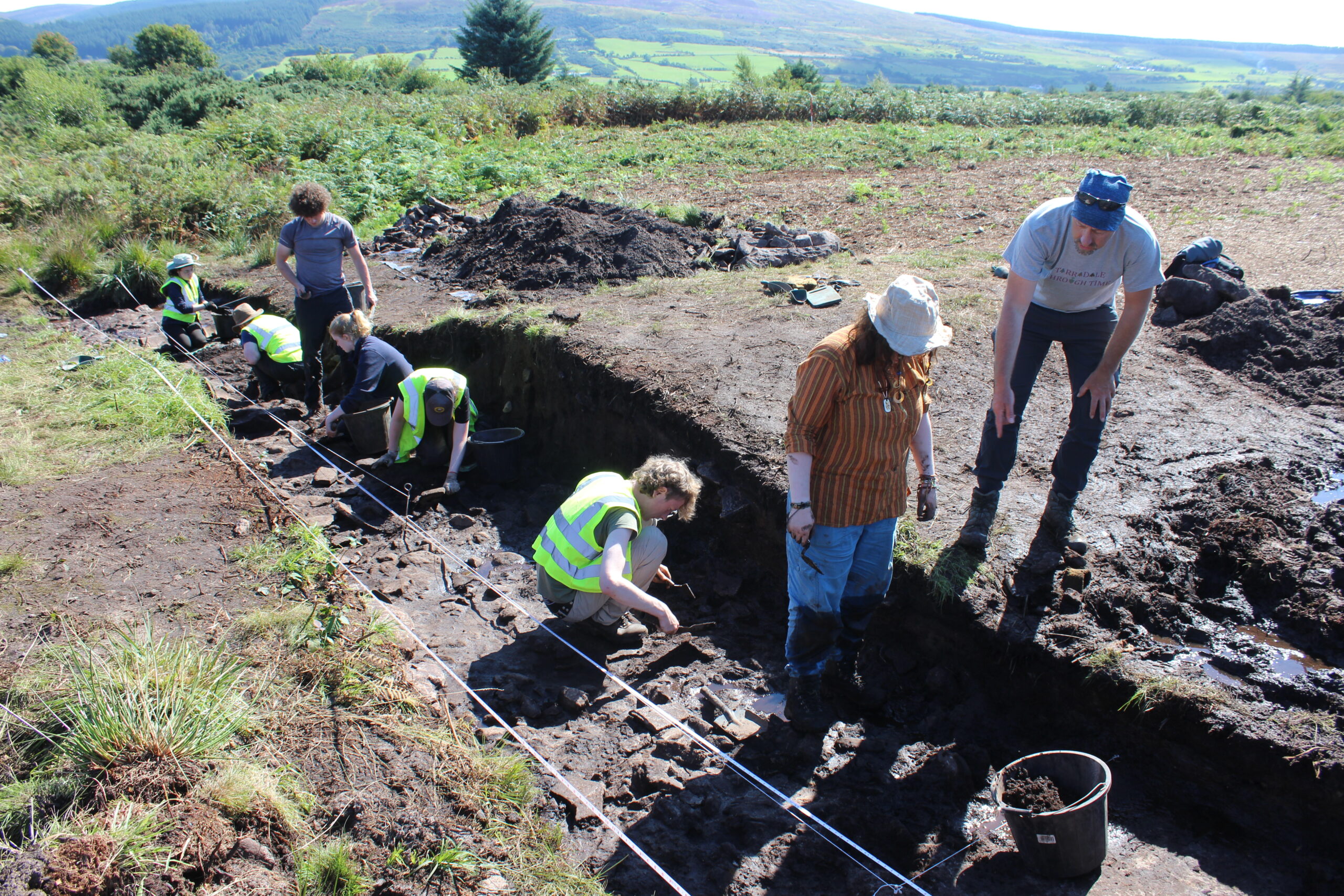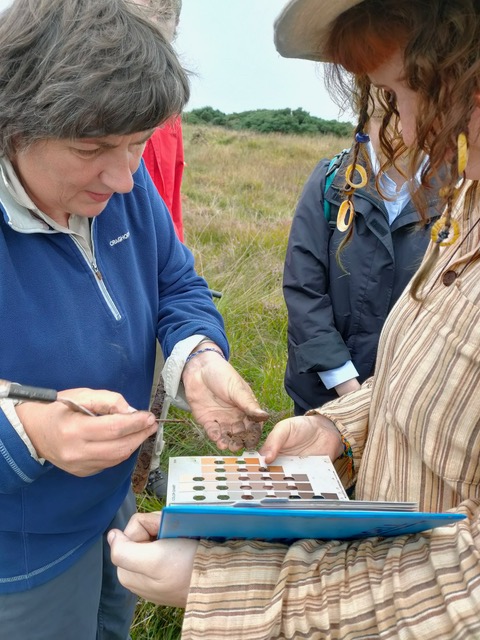On the Isle of Arran’s south-west coast, archaeologists have begun uncovering what is believed to be the only complete Neolithic cursus in Britain.
The vast rectangular enclosures at Drumadoon, which date back to between 4000 and 3000BC, would have been used for ceremonies.
The Neolithic structures are usually made up of vast rectangular enclosures, with the one on Arran defined by a large stone, earth and turf bank running around the entire perimeter.
Constructing the huge monument, which measures 1.1km long and 50 metres wide, would have involved staggering amounts of labour by farmers, transforming the entire local landscape.

Excavations through the cursus bank at Drumadoon.
‘I have been fortunate to be involved in the excavations of several cursus monuments over the last 30 years, but this is by far the most significant,’ says Kenny Brophy, a senior lecturer in archaeology at Glasgow University.
‘The survival of the monument means that the potential it has for shedding light on early Neolithic farming and social organisation is incredibly exciting.
‘These sites are almost all ploughed flat so to be able to stand on near intact cursus bank is very rare.’
Prehistoric field boundaries, clearance cairns and round houses have also been found in the same landscape, all preserved within peatland, sealing the archaeological layers.
Ancient soils representing the original Neolithic land surface, together with cultivated soils from the Bronze age period, provide an unparalleled opportunity to understand how people interacted with the cursus monument and how early farmers transformed this place.
The universities of Glasgow, Birkbeck, Bournemouth, Reading, Coventry, Birmingham, and Southampton as well as archaeologists from Archaeology Scotland and Historic Environment of Scotland, are all investigating the find.
Experts will use cutting-edge environmental scientific techniques, including ancient DNA, to understand how the landscape was constructed and used.
The Arran cursus sits close to the stone circles of Machrie Moor on the island.

Geoarchaeology being undertaken at Drumadoon.
‘The initial discoveries reveal a highly unusual combination of a ceremonial monument within a prehistoric farming landscape,’ said Professor Nicki Whitehouse, of archaeological science at Glasgow University.
‘It is part of a continuum that likely linked to the ritual site at Machrie Moor, probably forming part of something much more extensive.
‘The science work will allow us to understand about the animals and plants people farmed, how people impacted the landscape and its ecosystems and transformed their soils for cultivation – and what we may learn from this today.’
Dr Gavin MacGregor, director of Archaeology Scotland, added: ‘There has been huge interest on Isle of Arran about the recent exciting discoveries, local volunteers helped on the dig and artists joined us who were all really inspired by the stories of this ancient site and its changing landscape which the scientific work is beginning to reveal.
‘There is great potential for supporting more archaeological learning and storytelling with the community in future investigations.’
Read more news on Scottish Field’s news pages.
Plus, don’t miss the September issue of Scottish Field magazine.
TAGS

